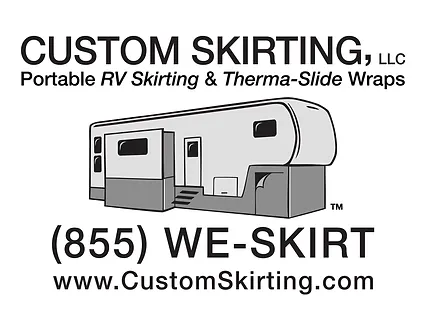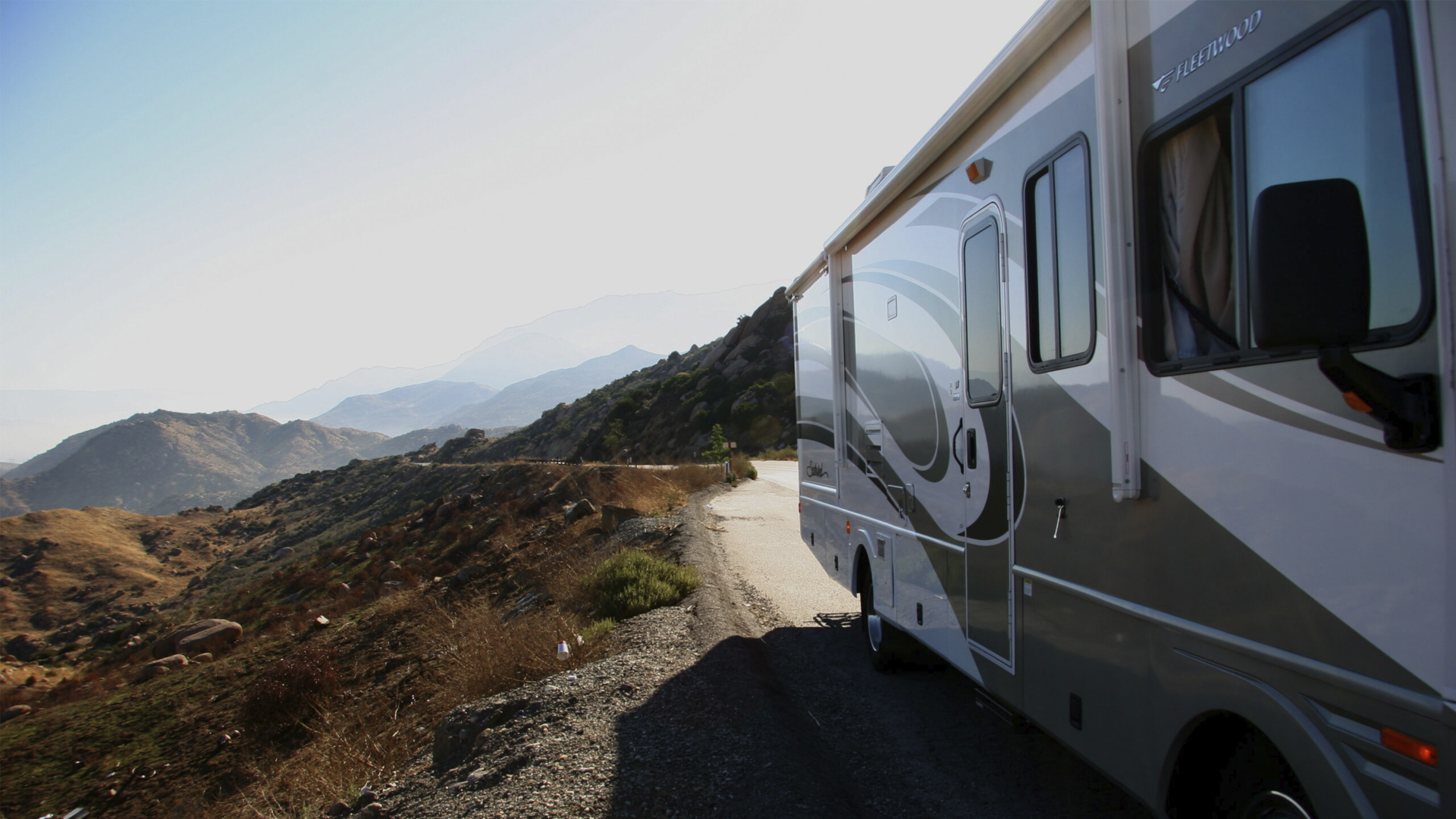
Essential Guide to RV Slide Out Maintenance
Table of contents
RV slide outs are an essential feature of modern recreational vehicles, offering increased living space and comfort on the road. These components allow RVs to expand and contract, providing room for amenities such as beds, sofas, or dining areas. However, like any mechanical system, RV slides require regular upkeep to ensure smooth operation and to avoid costly repairs. Neglecting RV slide out maintenance can lead to issues such as leaks, misalignments, and motor failures, potentially cutting your trip short and draining your wallet. This comprehensive guide covers everything you need to know about RV slide out maintenance, from preventive tasks to troubleshooting common problems. By following these tips, you can extend the life of your camper slides and ensure your RV operates at peak performance.
Understanding RV Slide Out Types
Before diving into the maintenance specifics, it’s crucial to understand the different types of RV slides available. The two primary types are electronic slide outs and hydraulic slide outs. Knowing which type you have will help you tailor your RV slide maintenance routine to your specific system.
Electronic Slide Outs
Electronic slide outs operate using an electric motor that drives the mechanism. They typically rely on a 12-volt battery system to power the motor, with gears or tracks facilitating the movement. These systems are generally simpler to maintain but may face motor and wiring issues if not regularly inspected.
Hydraulic Slide Outs
Hydraulic slide outs use hydraulic pumps to move the slides in and out. These systems are often used for larger or heavier slide outs because they can provide more force. They rely on a hydraulic fluid system to generate pressure, which needs regular checks and maintenance to prevent leaks and ensure proper function.
Understanding whether you have an electronic or hydraulic slide out is key to carrying out the right slide out maintenance.
Essential Preventive Maintenance Tasks
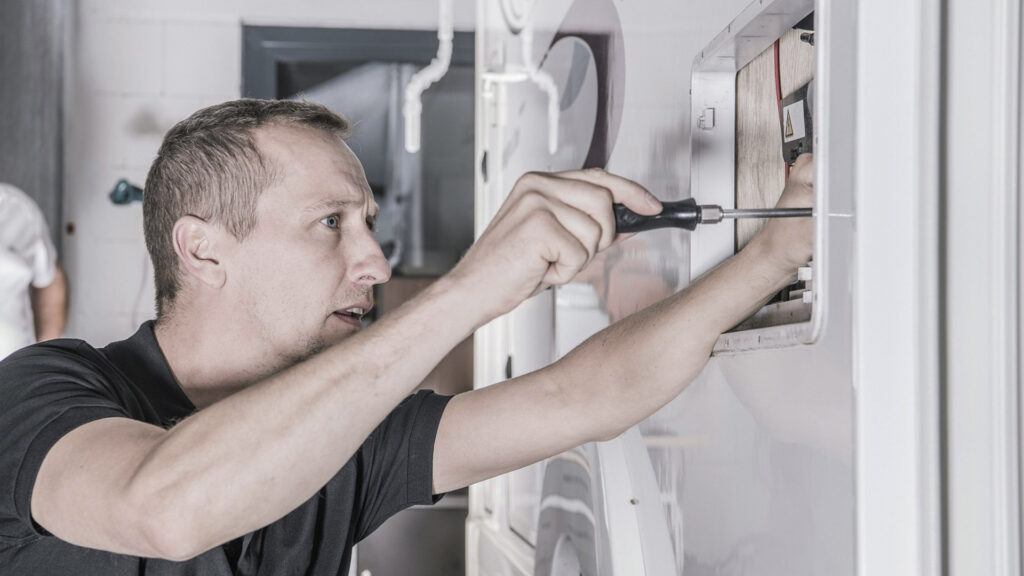
Preventive RV slide maintenance is critical to ensuring your camper slides function smoothly throughout your travels. Here are some of the most important tasks to keep your RV slides in top shape.
Inspecting and Caring for Slide Out Seals
One of the most vital components of any RV slide out maintenance routine is caring for the seals. The seals play a crucial role in preventing water damage and maintaining climate control inside the RV.
Step-by-Step Guide:
- Inspect the Seals: Regularly check the rubber seals around the slide out for cracks, wear, or gaps. These can allow water and air to penetrate the RV, leading to water damage or increased heating/cooling costs.
- Clean the Seals: Use a gentle, non-abrasive cleaner to remove dirt, debris, and mold from the seals. Avoid harsh chemicals that could degrade the rubber.
- Lubricate the Seals: Apply a seal conditioner or lubricant, such as a silicone-based spray, to keep the rubber flexible and prevent it from drying out or cracking. This should be done every few months or as recommended by the seal manufacturer.
Cleaning and Maintaining the Slide Out Roof
The roof of your RV slides is exposed to the elements, making it susceptible to dirt, debris, and damage. Keeping the roof clean helps prevent leaks and extends the life of the slide out.
Step-by-Step Guide:
- Clear Off Debris: Before retracting the slide out, always clear off any leaves, branches, or debris from the roof. This prevents the seals from being damaged when the slide is retracted.
- Inspect for Damage: Check for any tears, punctures, or signs of wear on the roof. If you find minor issues, patch them immediately to prevent them from worsening.
- Clean the Roof: Use a gentle soap and water solution to clean the slide out roof regularly. Avoid harsh chemicals that could harm the roofing material.
Lubricating Moving Parts
Lubrication is key to ensuring that your RV slides operate smoothly and without unnecessary strain on the motor or hydraulic system.
Step-by-Step Guide:
- Identify Moving Parts: On an electronic slide, this includes the tracks, gears, and motor components. For a hydraulic system, focus on the hydraulic rams and related components.
- Choose the Right Lubricant: Use a slide-out lubricant that is safe for the specific components of your system. For electronic slides, a dry silicone spray works well, while hydraulic systems may require a different type of lubricant.
- Apply Lubricant: Lightly spray or apply the lubricant to all moving parts, making sure to avoid over-lubrication, which can attract dirt and debris. This process should be done at least once or twice a year, depending on usage.
Checking and Maintaining the Electrical System
For those with electronic slide outs, proper care of the electrical system is crucial to avoid malfunctions.
Step-by-Step Guide:
- Check the Battery: Ensure that the battery powering your electronic slide is fully charged and in good condition. A weak battery can lead to sluggish or failed slide movements.
- Inspect Wiring: Regularly inspect the wiring connections to the motor for any signs of fraying, corrosion, or loose connections.
- Maintain the Motor: Keep the motor clean and free of dust. If the motor seems to struggle, check for debris in the gears or consider seeking professional help.
Hydraulic System Maintenance
If your RV slides operate using a hydraulic system, keeping an eye on the hydraulic fluid and components is crucial for smooth operation.
Step-by-Step Guide:
- Check Fluid Levels: Regularly check the hydraulic fluid reservoir and ensure it is at the recommended level. Low fluid can lead to sluggish movement or complete failure of the camper slides.
- Look for Leaks: Inspect the hydraulic lines for any signs of leaks. Hydraulic fluid leaks can be messy and reduce the efficiency of your system.
- Replace Fluid as Needed: Over time, hydraulic fluid can degrade. Follow the manufacturer’s recommendation for fluid replacement intervals to keep your system running smoothly.
Troubleshooting Common Slide Out Problems
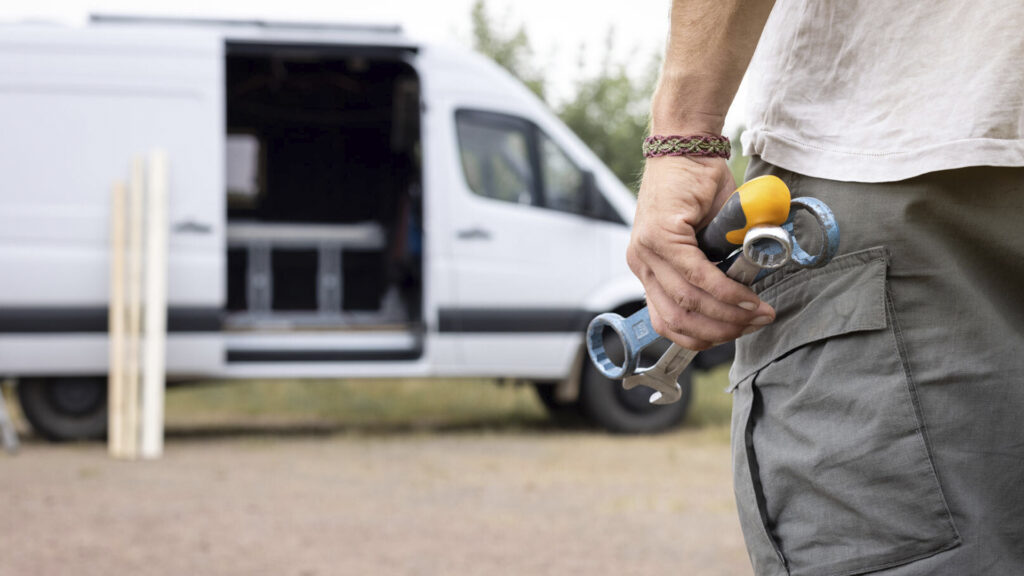
Even with regular RV slide out maintenance, problems can still arise. Here are some common issues and how to troubleshoot them:
Misalignment
If your slide out appears crooked or isn’t extending/retracting smoothly, it may be misaligned.
Solution:
- Check the tracks for debris or obstructions.
- Lubricate the moving parts to see if it helps realign the slide.
- If the slide is still misaligned, you may need to adjust the alignment screws or consult a professional.
Motor Failure
An electronic slide motor may stop working due to wiring issues, a blown fuse, or motor burnout.
Solution:
- Inspect the wiring and fuses for any signs of damage.
- Check the battery to ensure it’s fully charged.
- If the motor continues to fail, consider replacing it or seeking professional help.
Hydraulic Leaks
Hydraulic leaks can result in sluggish or failed slide movement.
Solution:
- Identify the source of the leak by inspecting the hydraulic lines.
- Replace any damaged lines or fittings.
- Top off the hydraulic fluid reservoir if necessary.
When to Seek Professional Maintenance
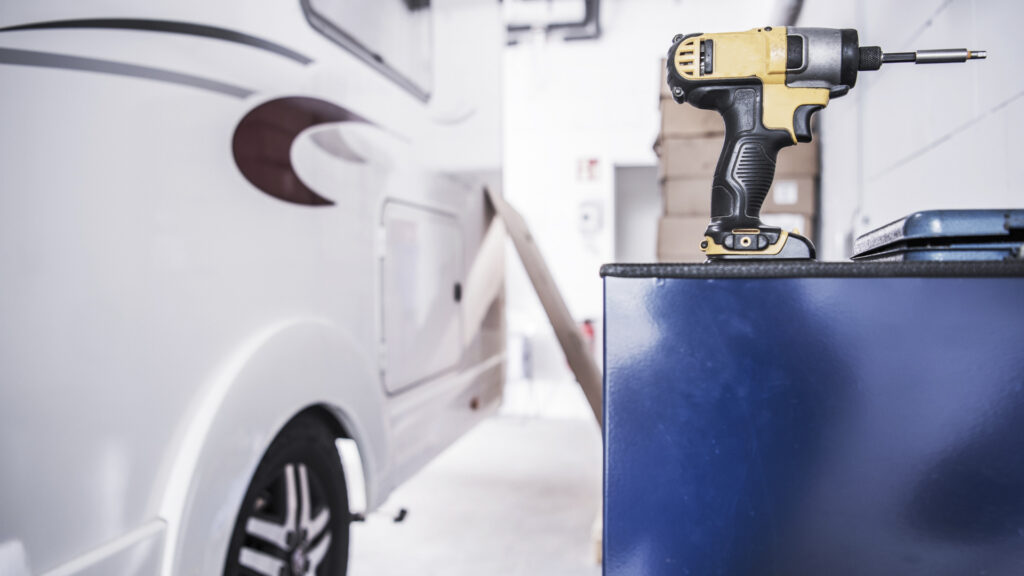
While many slide out maintenance tasks can be handled by RV owners, there are times when professional service is required. If you encounter any of the following issues, it’s best to consult a professional:
- Persistent leaks, even after seal maintenance.
- Motor failure that cannot be resolved through simple troubleshooting.
- Hydraulic system issues such as severe leaks or pressure problems.
When choosing a service center, look for one with certified RV technicians who have experience working on RV slides. A professional inspection can help catch minor issues before they turn into major, costly repairs.
Seasonal Maintenance Tips
Seasonal changes can affect your camper slides, so it’s important to prepare them accordingly.
Winterization
- Seal Check: Ensure all seals are in good condition before storing your RV for the winter. Cold weather can cause seals to crack if they aren’t properly conditioned.
- Retract Slides: Always store your RV with the slides fully retracted to protect the mechanism from the elements.
- Protect from Moisture: Use an RV cover or tarp to shield your slide outs from snow and ice.
Spring Reactivation
- Inspect Seals and Moving Parts: After the winter season, thoroughly inspect seals and lubricate moving parts.
- Test the Slide Out Mechanism: Fully extend and retract the slides to ensure everything is functioning properly before your next trip.
By following these maintenance tasks and seasonal tips, you can ensure that your RV slides remain in excellent working condition, ready for your next adventure. Proper RV slide out maintenance not only enhances your comfort but also helps avoid costly repairs, allowing you to enjoy your travels with peace of mind.
Protect Your RV and Enhance Comfort with Custom Skirting!
Ready to elevate your RV experience? Ensure your camper slides and RV stay protected in any weather with our top-rated custom skirting solution. Designed for insulation and protection against the harshest elements, our “No-Snap, No-Gap” system offers superior defense against wind, water, and snow. With a perfect, on-site tailored fit, you’ll enjoy worry-free adventures all year round. Don’t wait until it’s too late—book your custom skirting today and safeguard your RV for the long haul!
